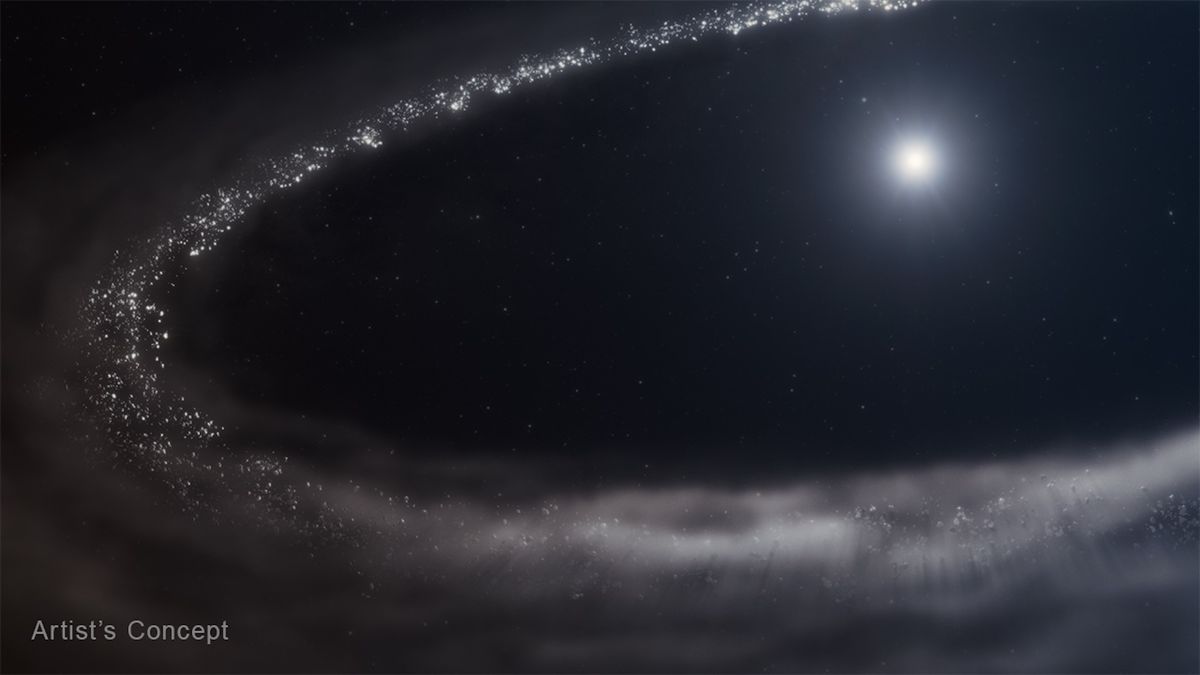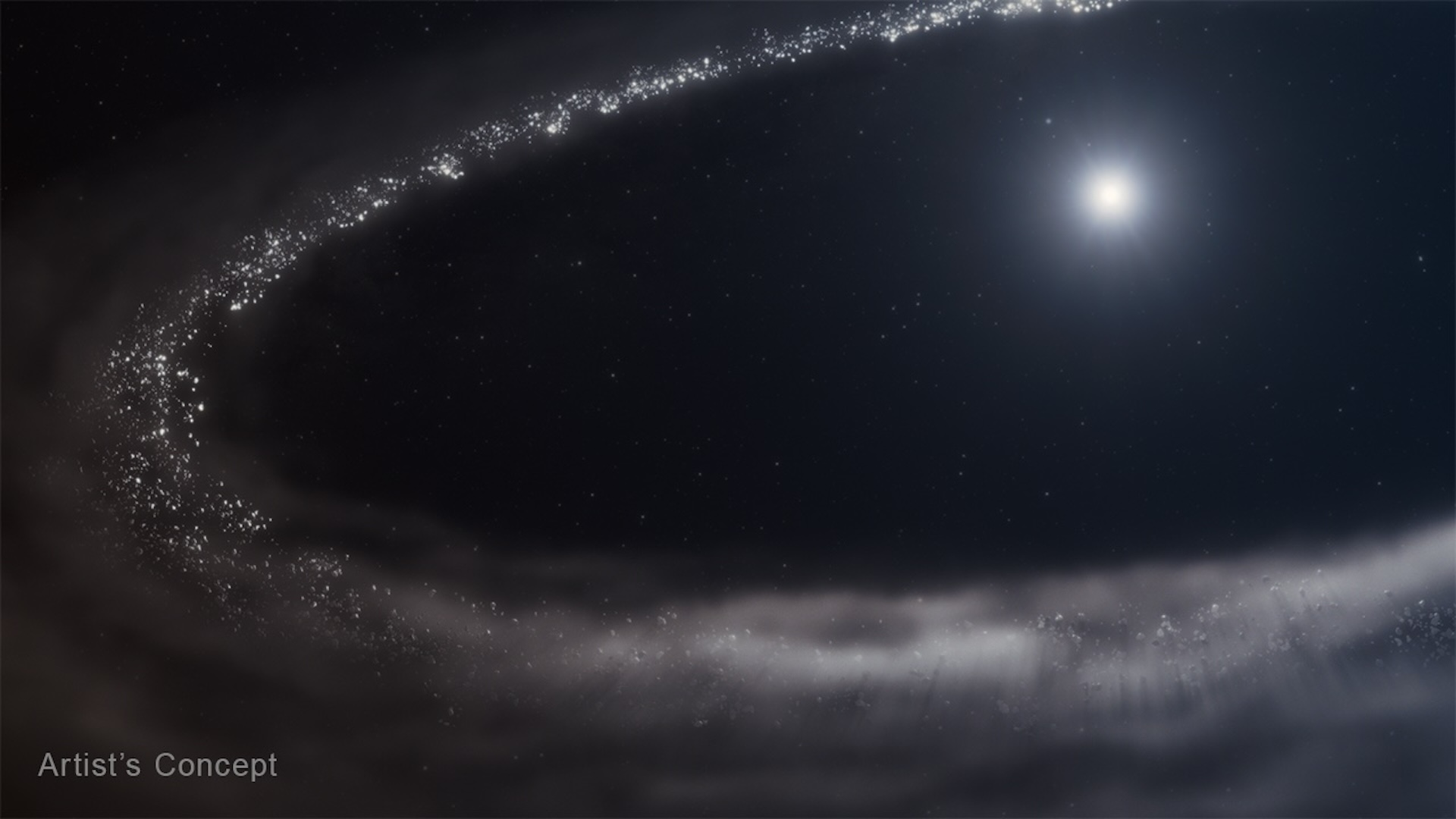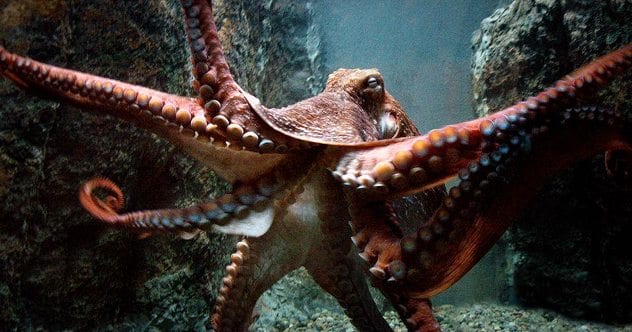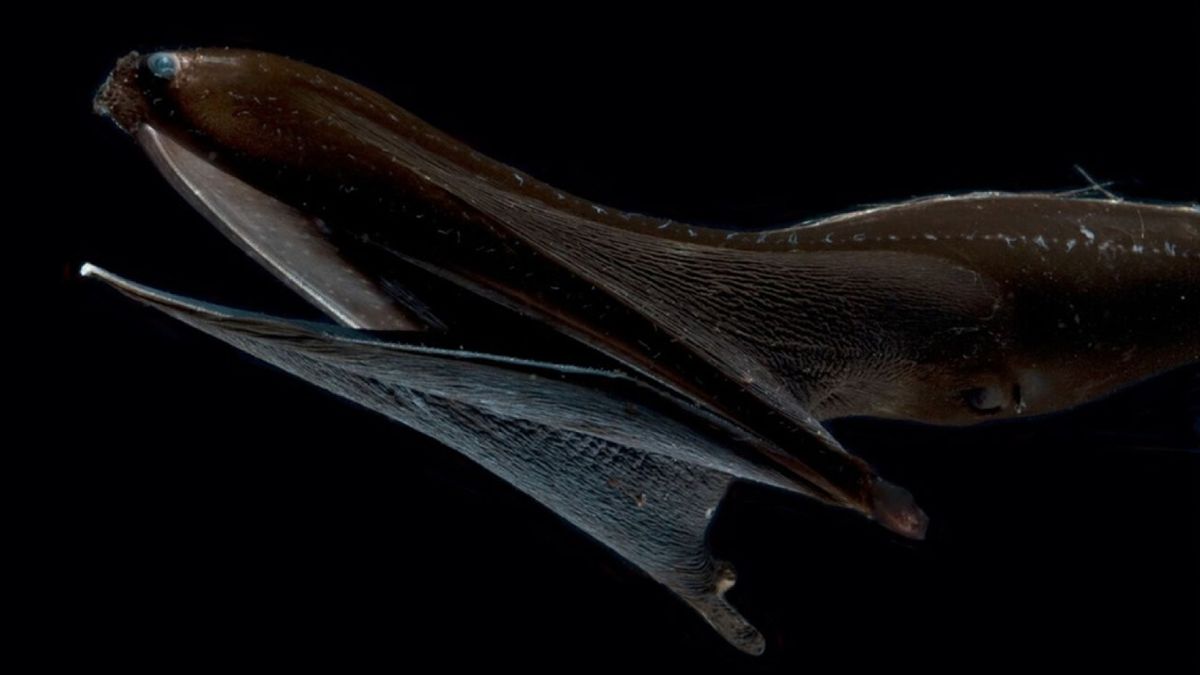In a milestone discovery, astronomers have announced that the James Webb Space Telescope (JWST) has detected water ice drifting through a dusty ring of debris surrounding a distant, sunlike star.
Astronomers have long suspected that water, especially in its frozen form, might be common in the cold, outer reaches of planetary systems beyond our own. That’s because in our own solar system, Saturn’s moon Enceladus, Jupiter’s Ganymede and Europa, and other icy moons are known to contain vast amounts of frozen water. Some of these moons are even thought to harbor subsurface oceans of liquid water, fueling ongoing discussions about their potential to support life.
Now, with JWST’s confirmation last week, scientists say they can begin exploring how water — a key ingredient for life as we know it — is distributed and transported in other planetary systems.
The new discovery centers on a star called HD 181327, located about 155 light-years away, in the constellation Telescopium. At just 23 million years old, HD 181327 is a cosmic infant compared with our 4.6 billion-year-old sun, and it’s encircled by a broad, dusty debris disk that is rich in small, early building blocks of planets.
“HD 181327 is a very active system,” study co-author Christine Chen, a research scientist at Johns Hopkins University in Maryland, said in a NASA statement. Frequent collisions between icy bodies in this disk are constantly stirring up fine particles of dusty water ice, which are “perfectly sized for Webb to detect,” Chen said.
The findings, published May 15 in the journal Nature, suggest these “dirty snowballs” of ice and dust could eventually play a key role in delivering water to future rocky planets that may form over the next few hundred million years. As planets take shape within the disk, comets and other icy bodies could collide with the young worlds and shower them with water — a process thought to have helped seed early Earth with the water that sustains life today.
JWST revealed that most of the distant star system’s water ice is concentrated in the outer regions of the disk, where temperatures are cold enough for it to remain stable. Closer in, the ice becomes increasingly scarce, likely vaporized by the star’s ultraviolet radiation or locked away in larger rocky bodies known as planetesimals, which remain invisible to JWST’s infrared instruments.
According to the research team, the debris disk around HD 181327 resembles what the Kuiper Belt — the vast, doughnut-shaped region of icy bodies beyond Neptune — likely looked like billions of years ago during the early stages of our solar system’s evolution.
“What’s most striking is that this data looks similar to the telescope’s other recent observations of Kuiper Belt objects in our own solar system,” Chen said in the statement.

























